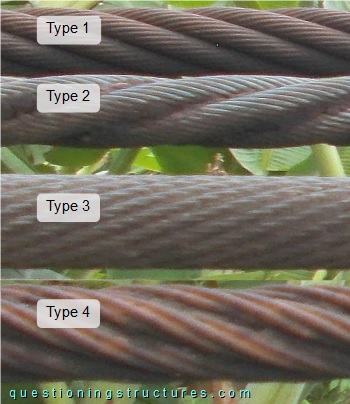General Information
Figure 1 shows a hybrid cable-stayed suspension bridge that is used by motorcycles, bicycles and pedestrians.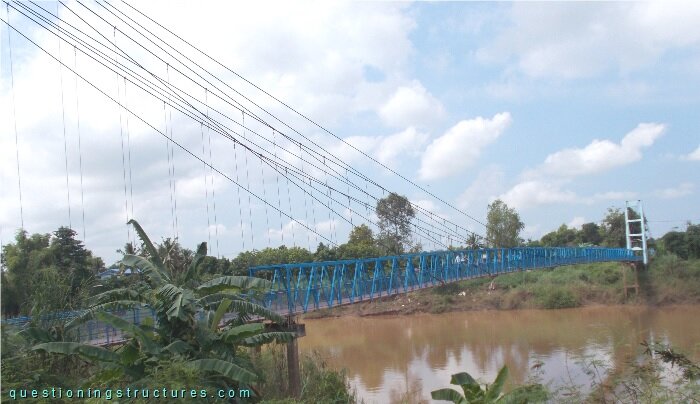
| Type | Three-span hybrid cable-stayed suspension bridge |
| Main span | ≅ 100 m |
| Deck width | ≅ 2 m |
| Girder | Steel underslung truss/through-truss |
| Pylon | Reinforced concrete (A-type, longitudinal) |
| Stay cable arrangement | Radial (two cable planes) |
Structural Concept
Figure 2 shows a schematic lateral view of the bridge.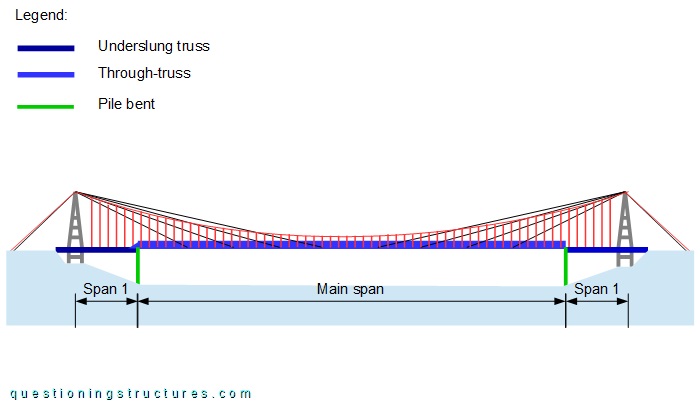 There are two pile bents between the pylons. The span between the pylon and the pile bent (span 1) is about 15 meters, and the girder consists of an underslung truss made of L-sections. The span between the two pile bents (main span) is about 100 meters, and the girder consists of a through truss made of L-sections. The underslung trusses are connected to hanger cables, while the through-truss is connected to hanger and stay cables. Figure 3 shows a side view of the bridge, while figure 4 shows a main span sector.
There are two pile bents between the pylons. The span between the pylon and the pile bent (span 1) is about 15 meters, and the girder consists of an underslung truss made of L-sections. The span between the two pile bents (main span) is about 100 meters, and the girder consists of a through truss made of L-sections. The underslung trusses are connected to hanger cables, while the through-truss is connected to hanger and stay cables. Figure 3 shows a side view of the bridge, while figure 4 shows a main span sector.
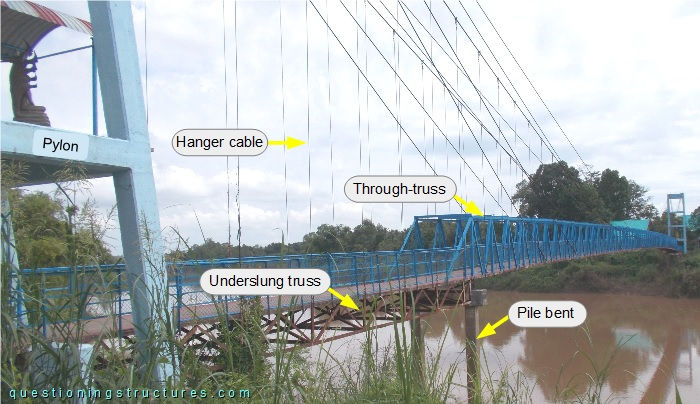
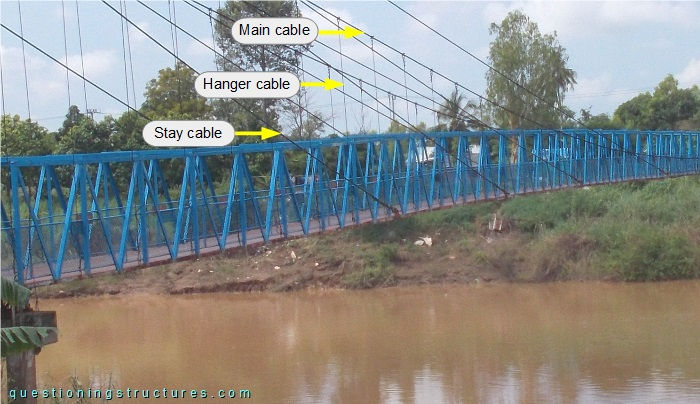
The ends of the through-truss are shown in figure 5.
| Shore 1 | Shore 2 |
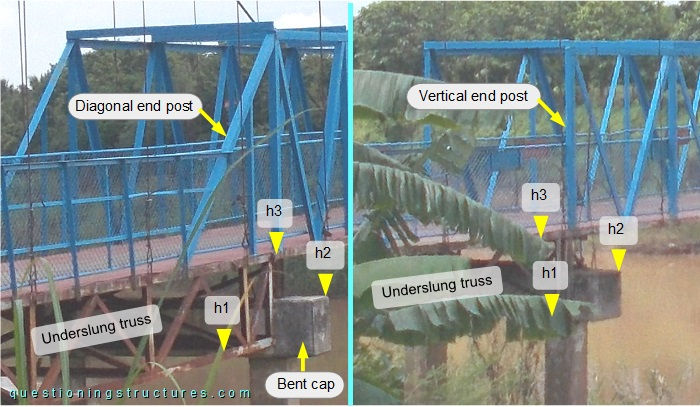 The through-truss has diagonal end posts only on shore 1, where the underslung and through-truss overlap. The bent caps and the trusses are at different elevations (h3>h2>h1).
The through-truss has diagonal end posts only on shore 1, where the underslung and through-truss overlap. The bent caps and the trusses are at different elevations (h3>h2>h1).
What is the purpose of the pile bents?
Does the bridge have a structural safety or serviceability problem without the stay cables?
Main and Stay Cables
Figure 6 shows the main and stay cables in the anchorage region.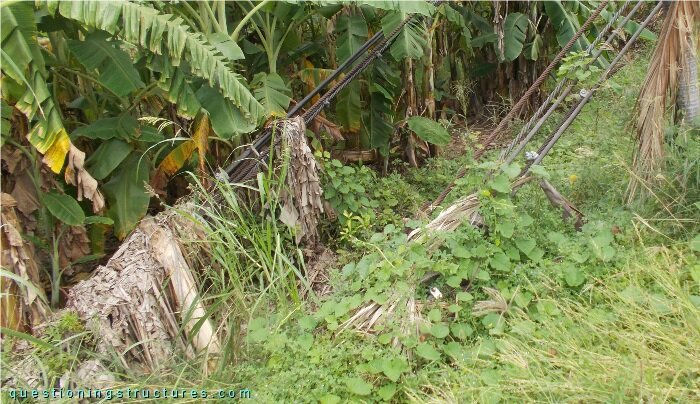 The cables are covered by vegetation.
The cables are covered by vegetation.
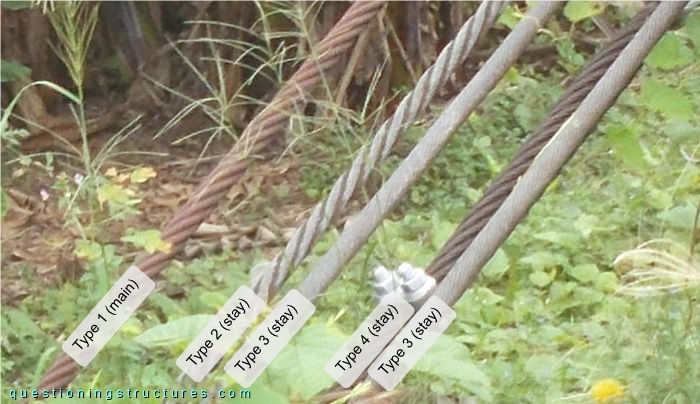 There are four cable types: type 1 is used for main cables, while types 2, 3, and 4 are used for stay cables. Figure 8 shows the four cable types.
There are four cable types: type 1 is used for main cables, while types 2, 3, and 4 are used for stay cables. Figure 8 shows the four cable types.
